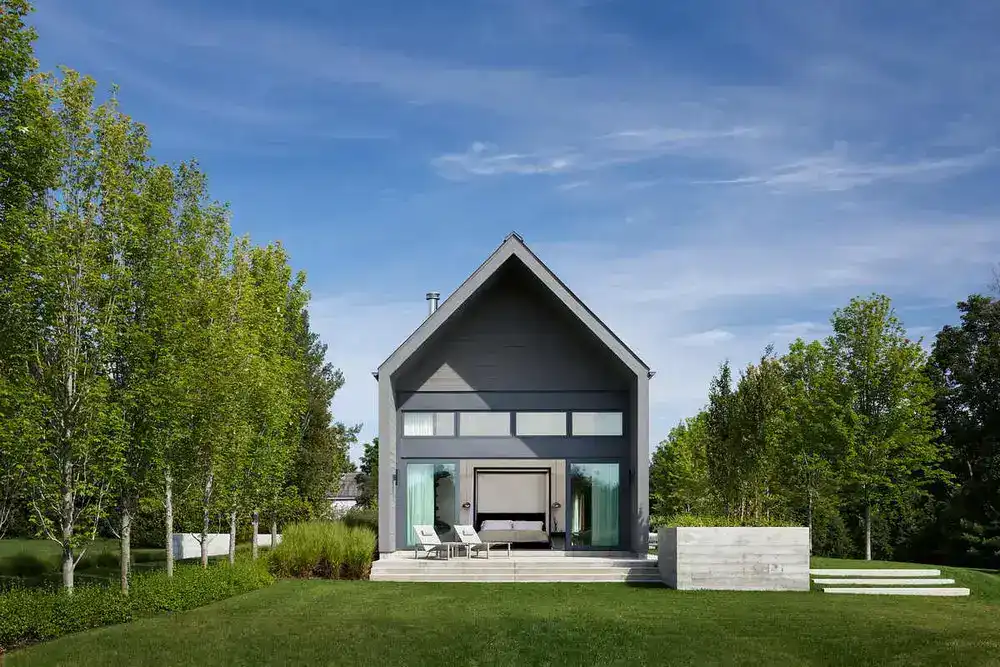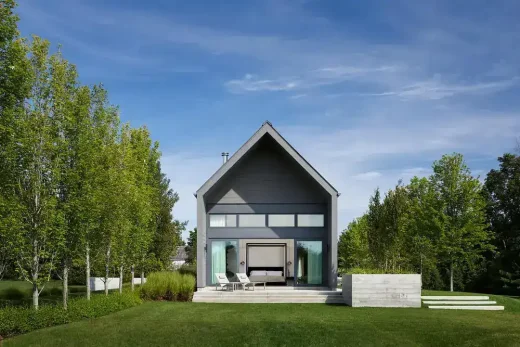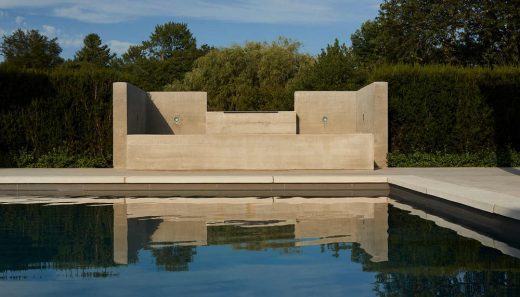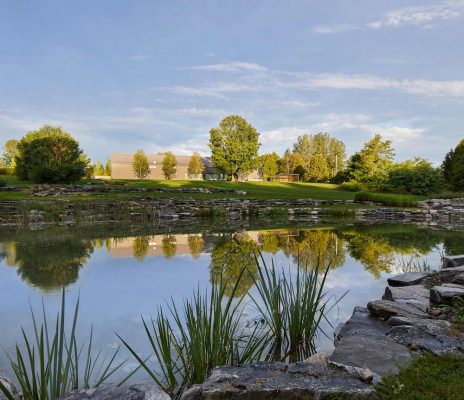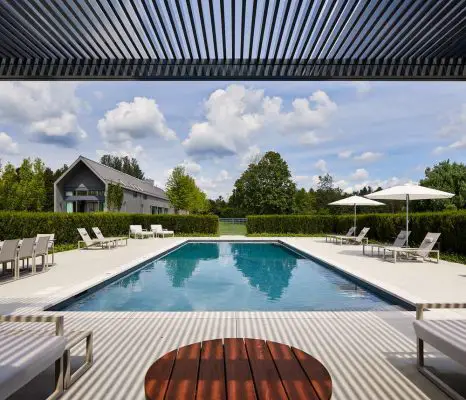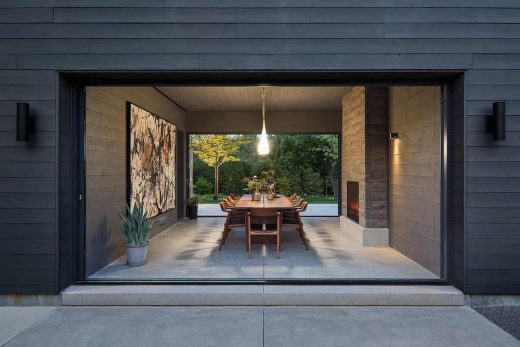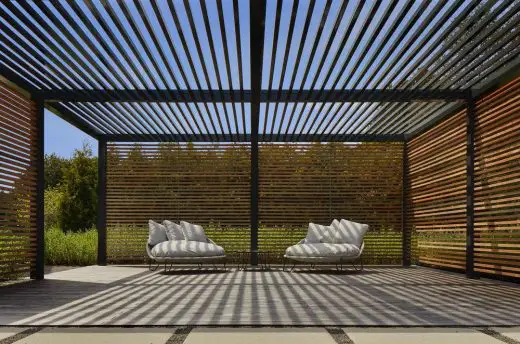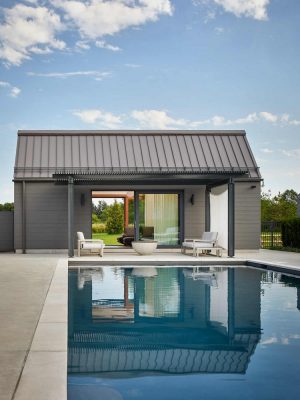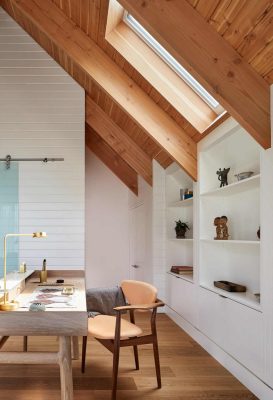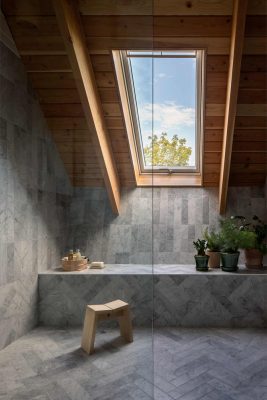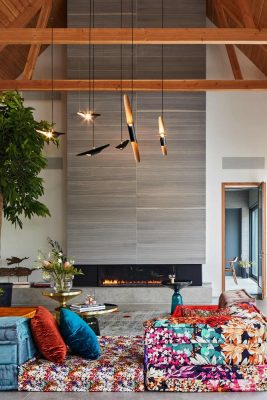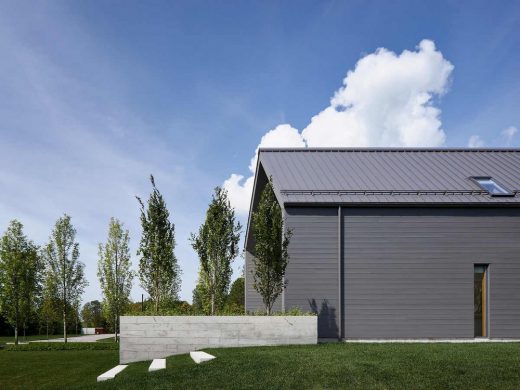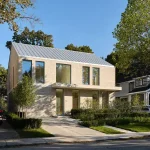The Farm Vacation Home Toronto, Southwestern Ontario eekend residence, Canadian real estate
The Farm Vacation Home in Toronto
Architect: Scott Posno Design
Location: Toronto, Southwest Ontario, Canada
Photos: Younes Bounhar
2 Nov 2020
The Farm Vacation Home
Located an hour east of Toronto, The Farm occupies a 65-acre site amidst the peaceful green fields of this Southwestern Ontario agricultural region, adjacent to a large conservation forest. It serves as a weekend and vacation home for the client, his grown children, and a variety of friends and family who frequent the tranquil property for relaxation and enjoyment year-round, away from the hustle and bustle of the city.
Comprised of several buildings and structures spread over the property amidst a plethora of natural landscape features, The Farm aims to engage the history and physical attributes of the site while amplifying a relationship with the outdoors. The main house sits atop a shallow ridge and follows a north-south orientation, with the primary longitudinal elevation facing east to capture morning light and a compelling view of the property’s rolling hills, dense thicket of trees, and the lush Ganaraska Forest beyond. An existing pond concentrates activity downslope; continuing on, a winding stream that bisects the property is a calming presence, shaded by the surrounding trees.
The main house is set back 200 feet from a dead-end gravel road, accessed from an L-shaped driveway leading to the long bar of a building. Its steeply gabled form and exaggerated length suggest a modern interpretation of the vernacular longhouse typology. Extending 153 feet from garage to master suite, the house is clad in cedar siding stained a soft charcoal, a perfect complement to the varied greens, browns and greys of the foliage, bark and rock comprising the landscape. A standing-seam metal roof is perfectly matched in colour, with deep overhangs at either end.
Here, the longhouse form translates into an even distribution of program from public to private functions in a sequential fashion. Additional privacy is maintained through the separation of sleeping quarters: the luxurious double-height master suite enjoys a privileged position with southern orientation and a secluded patio, while the other two bedrooms are located on the second floor of the house. Additionally, a separate loft space above the garage functions as both an artist’s studio and self-contained guest suite.
Multiple points of entry ensure a degree of permeability along the home’s considerable length: the front entrance on the west elevation is balanced on the east by an operable window wall connecting interior living space with the generously scaled outdoor patio, capitalizing on the verdant and seemingly limitless view. At the north end, the dining room occupies the full 22-foot width of the house and offers a flexibility of function: when the sliding glass pocket doors on either side are closed, the room is a warm, intimate space for gathering; when the doors are slid open, it becomes a breezeway—not merely an outdoor room, but a conduit connecting front and back, interior and exterior, east and west.
A restrained material palette defers to the power of the dramatic site conditions, allowing the simplicity of form and the subtleties of light and shadow to inflect the project. Polished concrete floors in the public areas are balanced by an abundance of white oak used for millwork throughout, and for the stairs and flooring on the second level. The introduction of Douglas fir in the form of an expressed structural ceiling system is a reminder of the inherently rustic origins of the project.
The Farm was not conceived of as a single iconic house in the country, but as a compound of buildings that engage the compelling qualities of site and landscape in such a way as to maximize use and enjoyment while establishing a greater connection to nature. Immediately adjacent to the garage at the north end of the house, a Zen Garden manifests as a perfectly square, semi-enclosed structure that is meant to encourage group or solitary activities such as yoga, meditation, reading or simply relaxing.
The walls are defined by 2” x 4” ipe slats, and overhead, identically sized hollow aluminum members form an open trellis, offering partial protection and cover. Fifty feet south of the main house, a secondary zone focuses activity on an outdoor pool, hot tub and a sunken fire pit beneath another trellis. Small accessory sheds contain a sauna, pool equipment and mechanical functions, and a separate, enticingly compact cabana mirrors the form and materiality of the main house—a perfectly proportioned additional one-bedroom guest suite should the need arise.
Located some 220 feet east of the main house, the pond exerts a magnetic and gravitational pull down the gentle slope of the site. By day, it is a scenic and intrinsic aspect of the property, inhabited by small wildlife creatures who are drawn to its life-giving properties.
By night, in the darkness, stargazing becomes a favoured nocturnal activity for those comfortably ensconced in the Adirondack chairs that ring the adjacent stone fire pit. Beyond the leafy grove of trees east of the pond, the sight and sound of the stream offers a surprising reward; two wooden bridges connect either side of the bank, inviting exploration and a deep contemplation of the mysteries of the forest. Project Summary by Leslie Jen.
Materials:
The materials were selected from a palette which most of the original farmhouses in the area also use. Stone, timber and metal were applied in a way that complimented and defined the contemporary style of the home. Concrete floors and walls, wood trusses, tongue and groove cedar siding, aluminum roofing and details, as well as a limestone fireplace native to the region were applied.
Lighting:
Rich, Brilliant & Willing, Delightfull, Vibia, Tom Dixon, Molo.
Interior Inspiration:
The interior design is intended to be a continuation of the architectural approach. The design draws on the intersection between a client with eclectic personal taste and a piece of design that strives to fit into its regional context. This contrast informed decisions regarding furniture, textiles, colour, lighting and ambience.
Art:
Four large pieces by artist, Harouna Ouedraogo are on display in the foyer, dining room and master bedroom. Originally from Burkina Faso, Harouna Ouedraogo now resides in Lyon, France.
Interior Characteristics:
The interiors reflect a balance between the taste and sensibility of the owner and the site – one of comfortable sophistication. A refined, rural retreat from the nearby city.
Brief:
The client bought the property for the sole purpose of enjoying the site. Set on 60 acres of rolling meadows, a pond, a stream, a woodlot and walking trail – the client wanted a design that would facilitate the enjoyment of the property both intimately and socially.
Design Approach:
The initial approach had to reconcile two very different contextual scenarios. The client lived, worked and enjoyed the cosmopolitan energy of the city and wanted to translate aspects of that lifestyle to the property. Meanwhile the site is located in a green belt, on a dead-end gravel street shared by 5-6 working farms. The approach had to respect the fabric of the area, while also providing a piece of architecture that met the needs of the client.
Rooted in the vernacular farmhouse architecture of the region, the house expresses contemporary details. The gabled, rectangular massing of the house introduces a linear geometry to the site which is repeated throughout the project to define different areas and programs. These long ‘strips’ provide space for the pool, gardens, pond and trail system that meander down the natural slope of the property. This linear strategy encourages long, relatively unobstructed sight lines in the north / south direction, while layering program and interest in the east / west direction.
The Farm Vacation Home in Toronto, Ontario – Building Information:
Architect: Scott Posno Design
Interior Designers: &Daughters
Project size: 4000 ft2
Site size: 242811 sqm
Completion date: 2017
Building levels: 2
Photographs: Younes Bounhar
The Farm Vacation Home, Toronto images / information received 021120
Location: Toronto, Ontario, Canada
Toronto Home Designs
Toronto Property Designs – Ontario real estate selection below:
Urban Cottage
Design: AGATHOM CO Ltd
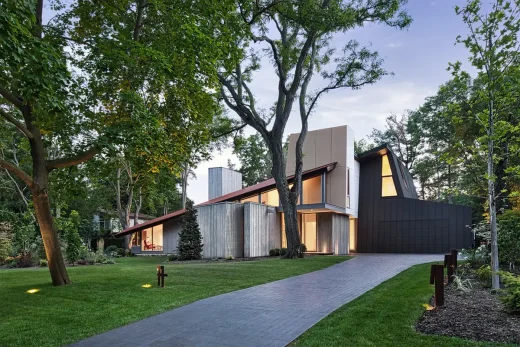
photo : Steven Evans Photography
Urban Cottage Ontario
Whistling Wind Island Residences
Design: Akb Architects
Whistling Wind Island Residences
Toronto Architecture
Toronto Architectural Designs – chronological list
Ontario Architecture News on e-architect
Canadian Architectural Designs
Canadian Building Designs – architectural selection below:
Comments / photos for the The Farm Vacation Home, Toronto Architecture page welcome

